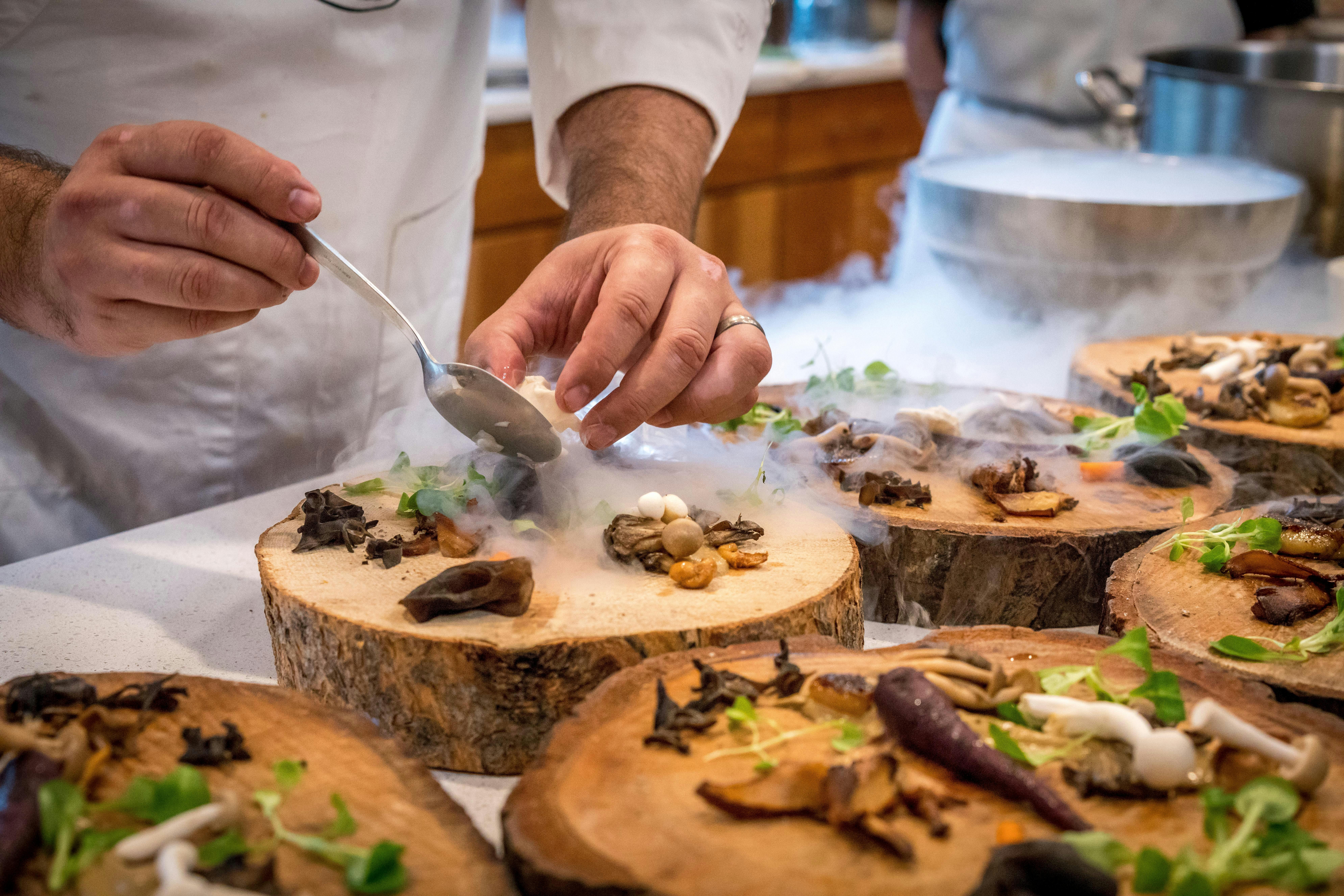Flavor Foraging: The Culinary Art of Wild Edibles
Embark on a gastronomic adventure that takes you beyond the supermarket aisles and into nature's pantry. Flavor foraging, the practice of sourcing and cooking with wild edibles, is revolutionizing modern cuisine. This artful pursuit marries ancient wisdom with cutting-edge culinary techniques, offering a sustainable and flavorful approach to dining. Discover how chefs and food enthusiasts are turning to the great outdoors to elevate their plates and palates.

Foraging 101: Safety and Sustainability
Before diving into the world of wild edibles, it’s crucial to understand the basics of safe and sustainable foraging. Knowledge is power when it comes to identifying edible plants and fungi in the wild. Many foragers start with easily recognizable items like dandelions or blackberries before moving on to more challenging finds. It’s essential to use reliable field guides, attend workshops led by experts, and never consume anything you can’t identify with 100% certainty. Equally important is the ethics of foraging. Sustainable practices involve taking only what you need, avoiding rare or protected species, and being mindful of your impact on the ecosystem. Many foragers follow the “rule of thirds” – harvest no more than one-third of any patch, leaving the rest for wildlife and regeneration. By approaching foraging with respect and caution, we can ensure that these wild pantries remain bountiful for generations to come.
From Forest to Plate: Cooking Techniques
Once you’ve safely gathered your wild bounty, the real culinary adventure begins. Cooking with foraged ingredients often requires different techniques than those used for cultivated produce. Many wild edibles have intense flavors that can easily overpower a dish if not handled correctly. Chefs are developing innovative methods to showcase these unique tastes. For instance, pickling and fermenting can mellow out bitter notes in certain plants while preserving their nutritional value. Gentle cooking methods like steaming or quick sautéing are often preferred to retain the delicate flavors of wild greens. Infusions and syrups made from foraged flowers or herbs can add complexity to cocktails and desserts. The key is to let the natural flavors shine, using complementary ingredients that enhance rather than mask the wild essence. As you experiment, you’ll discover that these untamed ingredients can transform familiar dishes into extraordinary culinary experiences.
Urban Foraging: Wild Food in the City
Foraging isn’t limited to rural areas or dense forests. Urban environments offer surprising opportunities for wild food enthusiasts. City parks, abandoned lots, and even sidewalk cracks can be home to edible plants. Common urban finds include dandelions, chickweed, and lamb’s quarters – all nutritious and versatile ingredients. However, urban foraging comes with its own set of challenges and considerations. It’s crucial to be aware of potential contamination from pollutants or pesticides. Foragers should research local regulations, as some cities have restrictions on harvesting plants from public spaces. Despite these challenges, urban foraging is gaining popularity as a way to connect with nature in concrete jungles. It challenges our perceptions of ‘weeds’ and encourages a more intimate relationship with our urban ecosystems. As cities increasingly embrace green spaces and biodiversity, the potential for urban foraging continues to grow, offering city dwellers a unique way to supplement their diets and explore their local environment.
The Future of Flavor: Wild Edibles in Modern Gastronomy
As the foraging movement gains momentum, it’s influencing broader culinary trends and reshaping our approach to food. High-end restaurants are incorporating foraged ingredients to create unique, place-based dining experiences that reflect local terroir. This trend is also trickling down to casual eateries and home kitchens, with wild foods becoming more accessible through specialized markets and foraging tours. Looking ahead, we can expect to see more collaboration between chefs and professional foragers, leading to innovative dishes that showcase the diversity of wild flavors. There’s also growing interest in using foraged ingredients in processed foods and beverages, from wild berry jams to pine-needle-infused spirits. As climate change affects agriculture, wild edibles may play an increasingly important role in food security and resilience. By embracing these forgotten flavors, we’re not just expanding our culinary horizons – we’re reconnecting with our environment and rediscovering the rich, complex tastes that nature has to offer.
Wild Wisdom: Tips for Aspiring Foragers
-
Always forage with an experienced guide when starting out
-
Learn to identify at least three edible plants in your area before expanding your repertoire
-
Carry a reliable field guide and consider using plant identification apps as a secondary resource
-
Avoid foraging near roads, industrial areas, or places that may be sprayed with pesticides
-
Harvest sustainably by taking only a small portion of what you find
-
Clean and process your foraged foods as soon as possible after harvesting
-
Start incorporating wild edibles into your cooking gradually to develop your palate
-
Join local foraging groups or online communities to share knowledge and experiences
In conclusion, flavor foraging offers a thrilling way to explore the hidden culinary treasures in our environment. By venturing beyond conventional ingredients, we open ourselves to a world of new tastes, textures, and nutritional benefits. This practice not only enhances our meals but also deepens our connection to the natural world. As we continue to push the boundaries of gastronomy, wild edibles stand at the forefront of culinary innovation, promising exciting flavors and sustainable dining experiences for adventurous food lovers everywhere.





